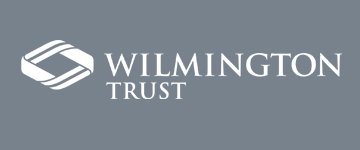There is a chance some carriers choose to exit certain parts of the reinsurance market if rates do not materially improve at the next sets of renewals in 2020, with some Lloyd’s players in particular finding property catastrophe underwriting uneconomical currently.
 Rates did not improve as much as some had been hoping at the January 2020 reinsurance renewals and with retrocession generally costing more this year some insurance carrier business models have become less tenable.
Rates did not improve as much as some had been hoping at the January 2020 reinsurance renewals and with retrocession generally costing more this year some insurance carrier business models have become less tenable.
It’s not just the cost of retrocession but also its availability and the types of coverage on offer that is pressuring some underwriters in the Lloyd’s market, we understand.
The disappearance of abundant pillared retrocessional reinsurance products from the market with the demise of Markel CATCo has hurt some Lloyd’s syndicates that were underwriting property catastrophe risks.
Certain retro products had been looked on particularly favourably by the powers-that-be in the Lloyd’s market, helping syndicates with their capital adequacy and business models.
Now these products are no longer available at all, or as readily as before, or are now considerably more expensive, it is leading some underwriters to ponder exiting the underwriting of certain areas of reinsurance risk, we’re told.
This is something we first wrote about last July and discussed with some Lloyd’s players around conference season last year.
At the time, most were sceptical that state of the market would result in significant challenges to their business models, but it soon became apparent that those with a catastrophe underwriting focus were going to feel pressure in time.
Neon’s pull-back from property treaty reinsurance, which it said was due to a mismatch in pricing between retrocession and its inwards business, gave a perfect example of how market forces were pressuring participants.
There was also Hamilton shuttering its Acapella syndicate business citing a lack of return, and Pioneer who exited Lloyd’s saying the syndicate structure was no longer economically efficient, which also provided signals of how the way the market had moved was making conditions less tenable for some.
Then Neon’s total shuttering and placement into run-off, as parent AFG said the business wasn’t generating a sufficient return on its investment through its participation at Lloyd’s, that showed how serious issues had become for some.
Not all of this was related to retrocession pricing and the mismatch with reinsurance, but the ramping up of pressures from this hasn’t helped, in particular for those writing catastrophe exposed business.
Analysts at Peel Hunt commented on this saying that when visiting the Lloyd’s market recently, “We were surprised to hear some carriers were considering materially shrinking their property catastrophe book if rates do not regain some momentum.
“It is clear that insurers are unlikely to increase their property catastrophe reinsurance exposures this year with rate adequacy in Japan and Florida of particular concern.”
The sharp increase in retrocession rates is also cited as a driver here, in making underwriting reinsurance less economically viable without some more significant rate increases at the next sets of renewals.
The Peel Hunt analysts further explained, “Retro rates are materially increasing, well ahead of reinsurance rates in Europe. This is pressuring margins in the process (negative arbitrage); unless more risk is retained on reinsurers’ balance sheets, exposure growth becomes less profitable on a risk adjusted basis.”
The analysts feel that there is “every reason to believe that rates in Japan (April) and the US (June/July) will continue their gradual upward trajectory.”
The question is whether that will be enough to counterbalance the negative arbitrage being experienced by reinsurers in some parts of the world.
Overall, some reinsurance writers are having to retain more risk, due to the lack of availability of retrocession, the disappearance of certain retro products they’d relied on, and pay more for protection due to the general higher cost of coverage.
“Some reinsurers may therefore decide to pull back their property catastrophe exposures given the higher risk t o T NAV and lack of sufficient margin benefit,” Peel Hunt’s analysts warn.
Rate adequacy is still some way away, the analysts believe, leading them to believe that for some the preferable route may be to reallocate capital to specialty lines where hardening of rates has been more significant.
 View all of our Artemis Live video interviews and subscribe to our podcast.
View all of our Artemis Live video interviews and subscribe to our podcast.
All of our Artemis Live insurance-linked securities (ILS), catastrophe bonds and reinsurance video content and video interviews can be accessed online.
Our Artemis Live podcast can be subscribed to using the typical podcast services providers, including Apple, Google, Spotify and more.































